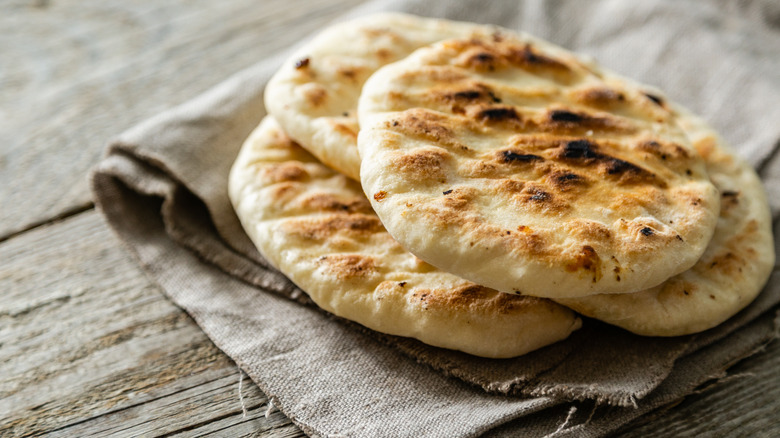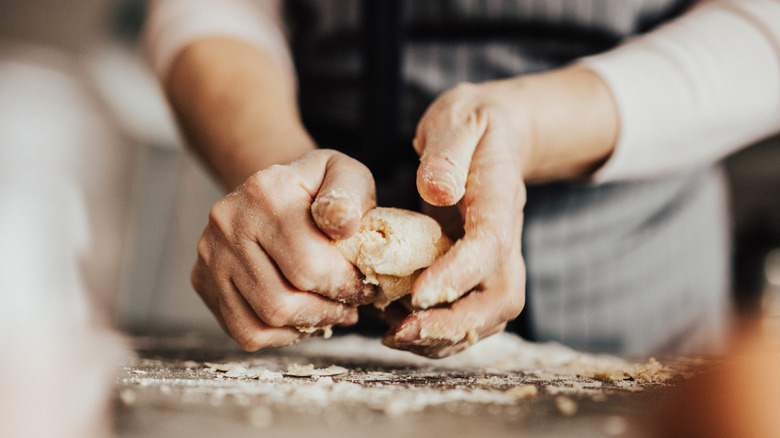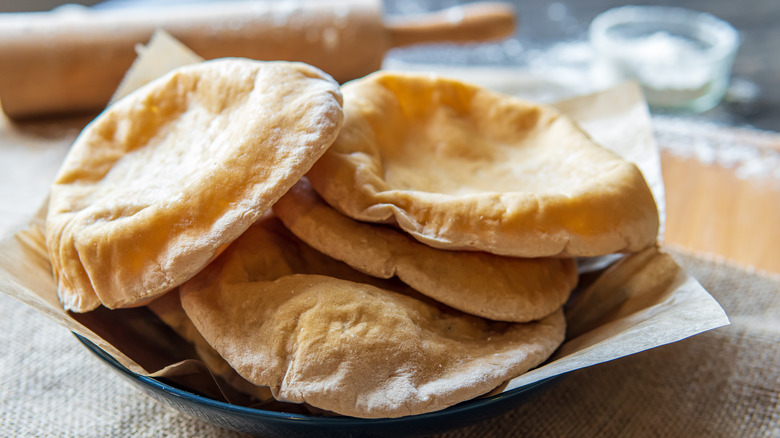Why Pita Bread Isn't Considered Gluten-Free
A staple of Middle Eastern and Mediterranean cuisines, soft and chewy pita is actually one of the most versatile types of bread available. It certainly makes for a great wrap for savory meats and veggies or as a dipper for tzatziki, basic hummus, tabbouleh, and other delicious spreads. Take advantage of the bread's hollow pocket by stuffing it with all of your favorite sandwich fillings. You can even slather a piece with tomato sauce, mozzarella cheese, and dried herbs and bake for a quick and easy pizza recipe — the options are as tasty as they are seemingly endless.
Similar to their applications in cooking, circular pita bread can be made in a variety of ways too, from baking and frying to even grilling. However, the base ingredients typically remain the same with the flatbread traditionally made with yeast, salt, water, and flour. Although wheat flour is more common, barley flour and rye flour can also be used.
But, regardless of the type of flour, the light and pillowy flatbreads aren't usually considered gluten-free because the gluten protein can form when using all three grains, which is what helps the dough rise and gives it its signature fluffy texture.
Gluten helps pita dough rise and provides its stretchy texture
In layman's terms, gluten is formed when flour is mixed with water. So, technically, flour doesn't actually contain gluten, but rather just the natural proteins required to make it. In the case of wheat flour, the proteins are glutenin and gliadin, while barley flour contains hordeins and rye flour has secalins. Just like many other types of bread, the gluten found in pita plays an integral role in the bread-making process and, essentially, provides a framework for the entire mixture.
As the dough is mixed or kneaded, the gluten proteins form longer chains, which is what allows the dough to stretch. During fermentation, gluten traps gas bubbles, causing the dough to expand and rise. And, when baked, the dough is hardened to give the bread its signature form and texture.
Although the absence of these proteins can cause many gluten-free breads to be denser and quite gritty, there are still ways to make pita bread taste great without the use of gluten.
You can still enjoy gluten-free pita bread
Whether you have celiac disease or just want to cut out gluten from your diet, you can still enjoy pita bread and all the dips and toppings so long as the pita is made with gluten-free flour substitutes.
If you're making a batch of the flatbread at home, great alternatives include millet flour, tapioca flour, or even a gluten-free flour blend like Better Batter, which features a mixture of rice flour, brown rice flour, tapioca starch, potato starch, and potato flour, among other ingredients. When it comes to the yeast, although most kinds are gluten-free, it's always best to check the label to be sure.
And, if you don't feel like throwing on your baking apron, fret not. There is also a plethora of brands to shop for ready-made, gluten-free pita bread, including BFree Foods Stone Baked Pita Breads and Against the Grain Original Pita Bread.



